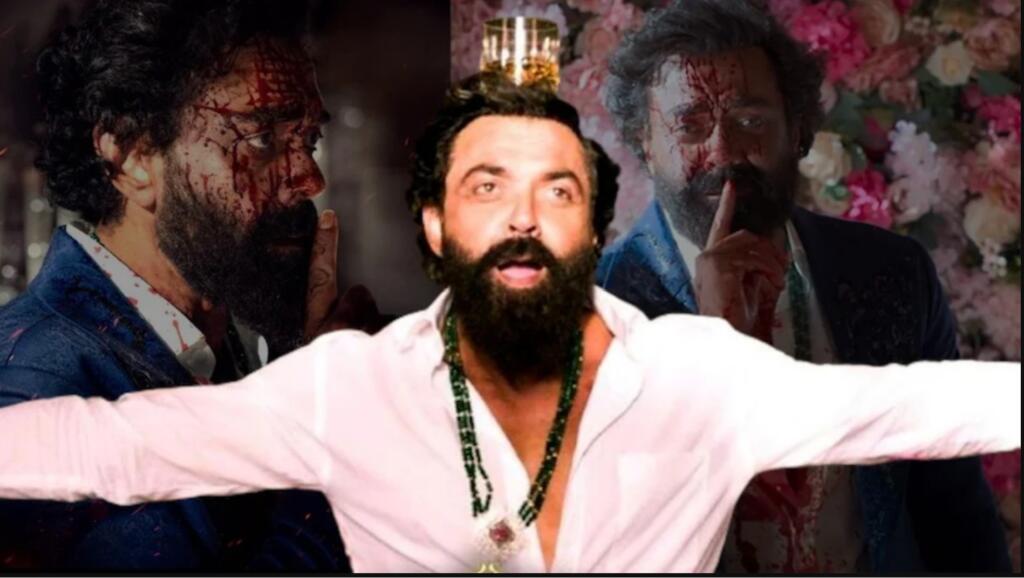The movie “Animal” is breaking all box office records. Directed by Sandeep Reddy Vanga, it’s receiving mixed reactions. While feminists have reservations typical of a Vanga film, audiences are lauding the performances. Ranbir Kapoor shines as the protagonist, and Anil Kapoor impresses as his father. Tripti Dimri, playing a small but significant role, has captured hearts nationwide. However, the real surprise is Bobby Deol. His 20-minute cameo as a mute villain is the talk of the town. His entry song, “Jamal Kudu,” an old Iranian folk song, has gone viral. People are mimicking his unique dance moves and overall style, showing immense love for such a brief role. It has been termed as his perfect comeback.
But it’s not exactly a comeback for Bobby Deol. He was already back in the limelight with the web series “Aashram,” where he played a conman-turned-fake godman. His film career never really paused; he gave commendable performances in “Love Hostel” (2022) and “Class of ’83” (2020), though both films didn’t do well. His last major film was “Housefull 4” in 2019.
Bobby Deol’s recent hype has a lot to do with his career and how it compares to others in his family and Bollywood. Bobby, despite having hit movies like “Gupt,” “Soldier,” “Humraaz,” and “Ajnabee,” never reached superstar status. He didn’t become known as the king of romance like Shahrukh Khan or get titles like Aamir Khan, who is called Mr. Perfectionist. He wasn’t a National Award winner like Ajay Devgn, nor did he have the mass appeal of stars like Akshay Kumar and Salman Khan.
Bobby’s career never went beyond a certain level, especially when compared to his family. His brother, Sunny Deol, is not just a big star but one of Bollywood’s biggest. Sunny’s recent movie, “Gadar 2,” was a earth shattering hit. Their father, Dharmendra, is a Bollywood legend, and his stepmother, Hema Malini, is considered one of the greatest Indian actresses. So, in his family of celebrated actors, Bobby was often just seen as Bobby, without the same level of fame or recognition.
The recent surge in popularity for Bobby Deol in “Animal,” directed by Sandeep Reddy Vanga, can be understood through two scientific concepts: the Underdog Effect and the Nostalgia Effect.
- Underdog Effect: This is about how people tend to support those who seem to be at a disadvantage or facing tough times. There are a few reasons for this. People might feel empathetic towards the underdog, think it’s only fair to give them a chance, or they might just enjoy seeing someone beat the odds. We all like stories where someone struggles and then succeeds. Rooting for the underdog lets us be a part of these stories and feel the joy of their victory.
- Nostalgia Effect: This one is about how thinking about the past can make us feel happier and more comfortable. When we remember the good old days, our brains release happy chemicals like dopamine and oxytocin. This makes us feel good.
In Bobby Deol’s case, both these scientific effects are at play. People see him as an underdog because he never reached the same level of fame as his family members or his contemporaries, despite having some successful movies. So, when he shines in a movie like “Animal,” people naturally root for him. They want to see him do well.
At the same time, Bobby Deol has been a part of Bollywood for a long time. Many people grew up watching his movies. Seeing him now, especially in a small yet memorable role, brings back good memories. This nostalgia makes people feel connected to him and happy to see him succeed.
So, Sandeep Reddy Vanga’s use of Bobby Deol in “Animal” taps into these parts of our brains, making his role something special for the audience.
Vanga’s strategic use of Bobby Deol in “Animal” is a masterclass in tapping into audience psychology, especially considering the Underdog and Nostalgia effects.
Vanga chose Bobby Deol, an actor known for his talent but not fully celebrated in Bollywood. He had Bobby work hard in the gym, resulting in a stunning physique that captured the internet’s attention. This transformation created a buzz even before the movie’s release.
Vanga’s next move was to use Bobby very subtly in the movie’s teaser and trailer. Bobby appeared for no more than three seconds, creating suspense and intrigue. This brief appearance was enough to pique interest without revealing too much.
In the film, Bobby was introduced with a melodious Iranian track, showcasing his entry with a dance style reminiscent of the Deol family tradition. This approach resonated deeply with the audience, especially those who grew up in the 90s.
This strategy worked wonders. Fans from the 90s, who saw Bobby Deol as a significant part of their movie-watching experience, rushed to theaters. They were curious to see how he had evolved and were pleasantly surprised. This group became his loudest cheerleaders, driven by the combination of the Underdog and Nostalgia effects.
As positive word of mouth spread, Bobby’s role in “Animal” became a sensation. It’s rare for side roles to have such an impact, but it’s not unprecedented. Actors like Ashutosh Rana in “Sangharsh,” Vijay Raaz in “Run,” and Rajpal Yadav in “Chup Chup Ke” have achieved similar feats.
Bobby Deol’s success story in “Animal” is a testament to the power of strategic casting and the impact of psychological effects on audiences. It’s a remarkable turnaround and a lesson in how underutilized talent, when presented correctly, can create waves. Here’s wishing all the best to Lord Bobby Deol in his renewed journey in Bollywood.
